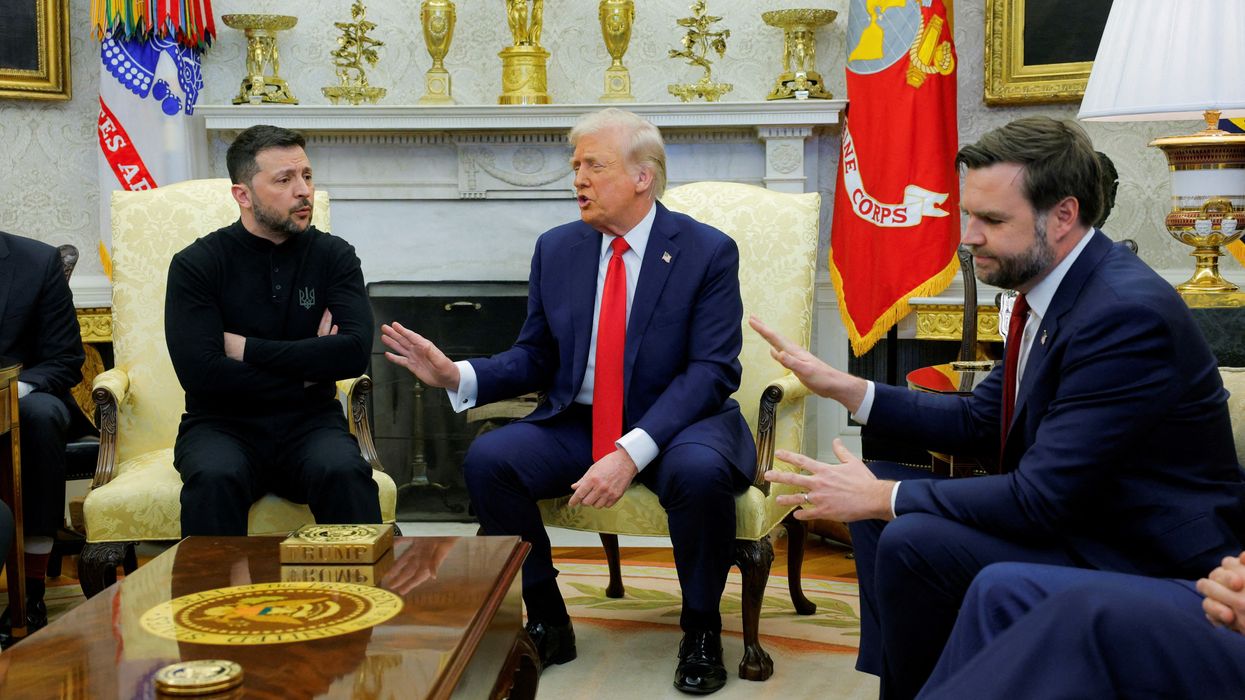As BRICS leaders gather in Johannesburg for their 15th summit, the United States has looked on with barely a comment.
Indeed, the grouping’s make-up is a bit of a contradiction — with Washington’s arch-rivals Russia and China, but also strong partners India, Brazil and South Africa. Many observers in Washington and some Western capitals have traditionally been rather dismissive of BRICS, seeing it as just a talk shop with little impact on U.S. foreign policy. Some have even called for its dissolution.
As I argue at length in a recent article in The Nation, this is a mistake. BRICS is gradually making a mark. It has more recently attracted major interest for membership from more than 20 other states. When a club has a waiting list for getting in, it is hard to characterize it as irrelevant. States want to join BRICS not because it will transform them overnight into powerful players, but because they see it as a serious attempt to fill a vacuum in the U.S.-led global order; an order that currently falls well short of meeting their needs. They are also hedging to prepare for a future world order in which unipolarity has diminished much more or disappeared altogether.
BRICS can be contrasted with another grouping that typically gets much more attention, one which the United States leads, namely the G7. The G7 is composed of the world’s wealthiest countries, all of which are also core U.S. allies.
Let’s compare the joint statements to come out of the recent G7 Hiroshima meeting and the 2022 BRICS summit in Beijing. A core difference between the two is Ukraine. Whereas the G7 harshly condemns Moscow and routinely calls for reversing Russian aggression, BRICS, while taking note of the various national positions of its member states on the conflict, explicitly calls for talks between Ukraine and Russia (while also affirming the principle of territorial integrity).
BRICS also pointedly refers to climate change in terms of the UN principle of Common But Differentiated Responsibility (which emphasizes greater responsibility for wealthy countries to reduce their emissions and contribute to global climate action), a greater voice for developing countries in U.S.-led financial institutions such as the World Bank, and support for the JCPOA (otherwise known as the Iran nuclear deal).
The statement also calls for restoring the strength of multilateral bodies such as the World Trade Organization with a clear reference to ending the crisis over the Appellate Body (which the United States has effectively paralyzed.)
BRICS has sometimes been spoken of in the vein of the landmark gathering of Afro-Asian states in Bandung in 1955 or the Non-Aligned Movement, founded in 1961. These were Global South initiatives that opposed bloc politics and the Cold War, and ended up having difficult relations with Washington.
This was partly because the United States took a skeptical, or even critical view, of these initiatives from the start. As Secretary of State John Foster Dulles famously said in 1956, nonalignment was “immoral.” During the early post-Cold War decades, Washington opposed the South’s initiatives such as a 2010 joint Turkish-Brazilian plan to resolve the Iran nuclear crisis and generally acted in intrusive and invasive ways to ensure its dominance in the Middle East and elsewhere.
This time around however, the United States appears to be taking a more reasoned position. Biden administration officials have repeatedly stated in Southeast Asia and elsewhere that they are not asking for Global South states to choose between themselves and their rivals, but instead are offering a choice.
So how should the United States respond to growing and gathering initiatives such as BRICS? Consistently acting in good faith on claims that it is not forcing choices would be a good first step. This doesn’t seem to be happening with the treaty allies of America, especially where China is concerned, but not pressuring Global South non-allies would win goodwill and preserve American soft power in these capitals.
The United States should also take seriously the discomfort of especially many Asian and African countries toward onerous demands that they perceive as impinging on their sovereignty. These demands include pushing the “democracy v. autocracy” trope, passing intrusive judgments on foreign political systems, and in general trying to universalize its values.
The application of these values abroad has been heavily marked with inconsistency and double-dealing, making such efforts lose all credibility. Some of these stated values are also bitterly contested within the domestic sphere of the United States itself. Thus, demanding other nations’ conformity with them is both a strategic and (in effect) a moral error.
Finally, Washington needs to address at least some of the development-oriented demands emerging from coalitions such as BRICS. These include, but are not limited to, reform of international financial institutions, greater support for international climate action, and ending the current paralysis within the WTO’s Appellate Body and returning to a genuinely rules-based trading approach.
The Global South is increasingly embracing rising East-South coalitions such as BRICS and the Shanghai Cooperation Organization (SCO), not because it is opposed to a major U.S. role in the world. Far from it. Rather, it seeks to hedge against declining unipolarity and build alternative institutions to address the shortfalls of the current order.
The best way for Washington to respond to this message is to play the game, not sit it out.
















